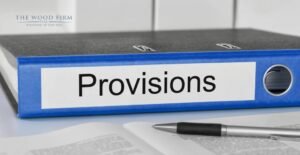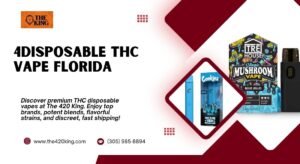If you’re steering an energy or utility company—maybe managing a power plant humming with turbines or a grid balancing renewable sources—you know the stakes are sky-high. One misstep, like excessive emissions or a missed regulatory target, can spark fines, erode trust, or tank your sustainability goals. Green certifications, like ISO 14001, LEED, or ENERGY STAR, step in as your roadmap to cleaner operations, slashing environmental impact while boosting efficiency. Honestly, in October 2025, with energy prices volatile and net zero pledges tightening, these certifications aren’t just eco-badges—they’re strategic tools to stay competitive and compliant. I’ve swapped stories with utility managers who say going green cut costs and won over eco-conscious stakeholders. With global certifications growing—ISO 14001 alone covers over 300,000 sites—the push for sustainability is undeniable, especially as trends like smart grids and carbon reporting gain traction.
Picture your operation as a bustling engine room—every process, from fuel use to waste management, needs to run clean and lean. Green certification is the wrench that tightens the bolts, ensuring efficiency and compliance. As we roll into November’s planning season—ideal for budgeting eco-initiatives—pursuing certification now could prep you for 2026’s challenges, like stricter EU Green Deal rules or renewable integration. But let’s not race ahead; first, let’s unpack what green certification means for energy and utility companies and why it’s worth your time.
The Heart of Green Certification: What’s on the Table?
Green certification focus on sustainability, but they’re not one-size-fits-all. ISO 14001 sets up an environmental management system (EMS) to track and reduce impacts like emissions or water use. LEED (Leadership in Energy and Environmental Design) targets building efficiency, perfect for utility offices or renewable facilities. ENERGY STAR certifies equipment or buildings for top-tier energy performance, often used in power plants or data centers.
No major updates hit in 2025—ISO 14001 (2015) and LEED v4.1 hold steady—but revisions loom, with ISO 14001 eyeing climate resilience tweaks by 2027. Some argue it’s extra work in a regulated sector, but here’s the flip: These certifications align with EPA or EU rules, streamlining compliance and avoiding redundant audits. Tools like Schneider Electric’s EcoStruxure or Siemens’ MindSphere track emissions and energy, making implementation less daunting.
A quick detour: In energy-heavy regions like Texas or Norway, where green tech is a cultural driver, certifications boost your rep, signaling commitment to a cleaner future. Emotionally, it’s uplifting—knowing you’re cutting carbon feels like powering a brighter tomorrow, right?
The Big Payoffs: Why Green Certification Matters Now
So, what’s the real juice? ISO 14001 can cut energy use by 10-15%, saving millions for power-hungry utilities. LEED-certified buildings reduce operating costs by up to 20%, ideal for utility offices or control centers. ENERGY STAR gear boosts efficiency, qualifying you for incentives like U.S. DOE rebates.
Compliance gets smoother, aligning with regulations like the EU’s Energy Efficiency Directive or EPA’s Clean Air Act, dodging hefty fines. Stakeholder trust? That’s the kicker—certification signals you’re serious about sustainability, attracting eco-minded investors or customers. In 2025, with carbon reporting mandates tightening and smart grids booming, certifications ensure your tech upgrades—like IoT sensors—don’t sideline eco-goals. Wouldn’t it feel steady to lead an operation that’s lean, green, and respected?
Repetition for emphasis: Sustainability, sustainability—it’s your edge in a carbon-conscious market.
Breaking Down the Certifications: What’s Involved
Let’s unpack the big players without drowning in jargon. ISO 14001 follows a Plan-Do-Check-Act cycle: Map your environmental impacts (e.g., coal plant emissions), set reduction goals, implement controls like efficient turbines, and audit progress. LEED focuses on building design—think solar panels or water-saving systems—scored via points for energy, materials, and innovation. ENERGY STAR requires meeting strict efficiency criteria, like upgrading HVAC or generators.
Each needs leadership commitment, documented processes, and third-party audits. Tools like Enablon or IBM’s Maximo streamline tracking emissions or energy flows. They scale to your size—small hydro plant or massive grid operator.
Your Game Plan: Steps to Snag Green Certification
Ready to roll? Start with buy-in—pitch execs on cost savings (e.g., 15% energy cuts) and compliance wins. Gap analysis ($1,000-$5,000) compares your setup to standards, using templates from BSI or USGBC.
Build the system: Define scope (e.g., power plant emissions), set targets (reduce carbon by 10%), and document processes. Train staff—online courses from PECB or GBCI keep costs low. Internal audits test readiness; external audits ($2,000-$15,000) from SGS or TÜV certify—Stage 1 reviews docs, Stage 2 checks ops.
Timeline? Six months to two years. Costs? $5,000-$50,000 for mid-sized operations. Here’s the thing: Engage workers early—technicians spot inefficiencies like leaky systems you might overlook.
The Price Tag: Budgeting for Green Success
Costs depend on certification and scale. ISO 14001 runs $5,000-$50,000 upfront for mid-sized utilities, covering consulting, training, and audits. LEED costs $10,000-$100,000, higher for complex projects like new substations. ENERGY STAR is cheaper—$2,000-$10,000 for equipment or buildings.
Ongoing? $2,000-$15,000 yearly per certification. Bundling (e.g., ISO 14001 with 50001) saves on audits. Software like EcoStruxure cuts admin costs. ROI? Energy savings and incentives often recover costs in 1-3 years.
The Tough Bits: Challenges and Smart Workarounds
Certification has hurdles. Budgets pinch—small utilities struggle with $10,000 upfront. Staff resistance? Some see it as green tape, not progress. Data gaps, like untracked emissions, slow EMS setup.
Phase it in—start with one site or certification. Consultants from ERM or DNV fill expertise gaps. Emotionally, the effort’s daunting, but greener ops feel like a legacy worth building, don’t they? Repetition: Commitment, commitment—it drives success.
A tangent: In renewable-heavy regions like Scandinavia, certifications align with cultural pushes for clean energy, adding local pride.
Real-World Wins: Energy Companies Going Green
Let’s ground it with stories. Stolt Tankers earned ISO 14001, cutting fuel emissions in shipping—a utility parallel. 3M’s global sites nabbed ISO 14001 and ENERGY STAR, slashing energy costs. Windsor Mill in Canada got LEED, boosting efficiency in pulp production.
On X, certifiers highlight utilities reducing carbon by 15% post-certification. Case studies show firms gaining contracts via green credentials. It’s like upgrading your grid—small changes, big impact.
Looking Ahead: Green Certification in a Net Zero World
In 2025, trends like AI-driven energy monitoring and carbon reporting push certifications to evolve. ISO 14001 revisions will likely emphasize climate resilience.
Tools like Oracle’s sustainability suite streamline compliance. Start now to lead the charge.
Final Thoughts: Is Green Certification Your Next Step?
Green certifications—ISO 14001, LEED, ENERGY STAR—equip energy and utility companies with systems to cut costs, meet regs, and build trust.
You know what? Explore BSI or USGBC resources—start a gap analysis. Honestly, in a sustainability-driven market, going green feels like a no-brainer.






